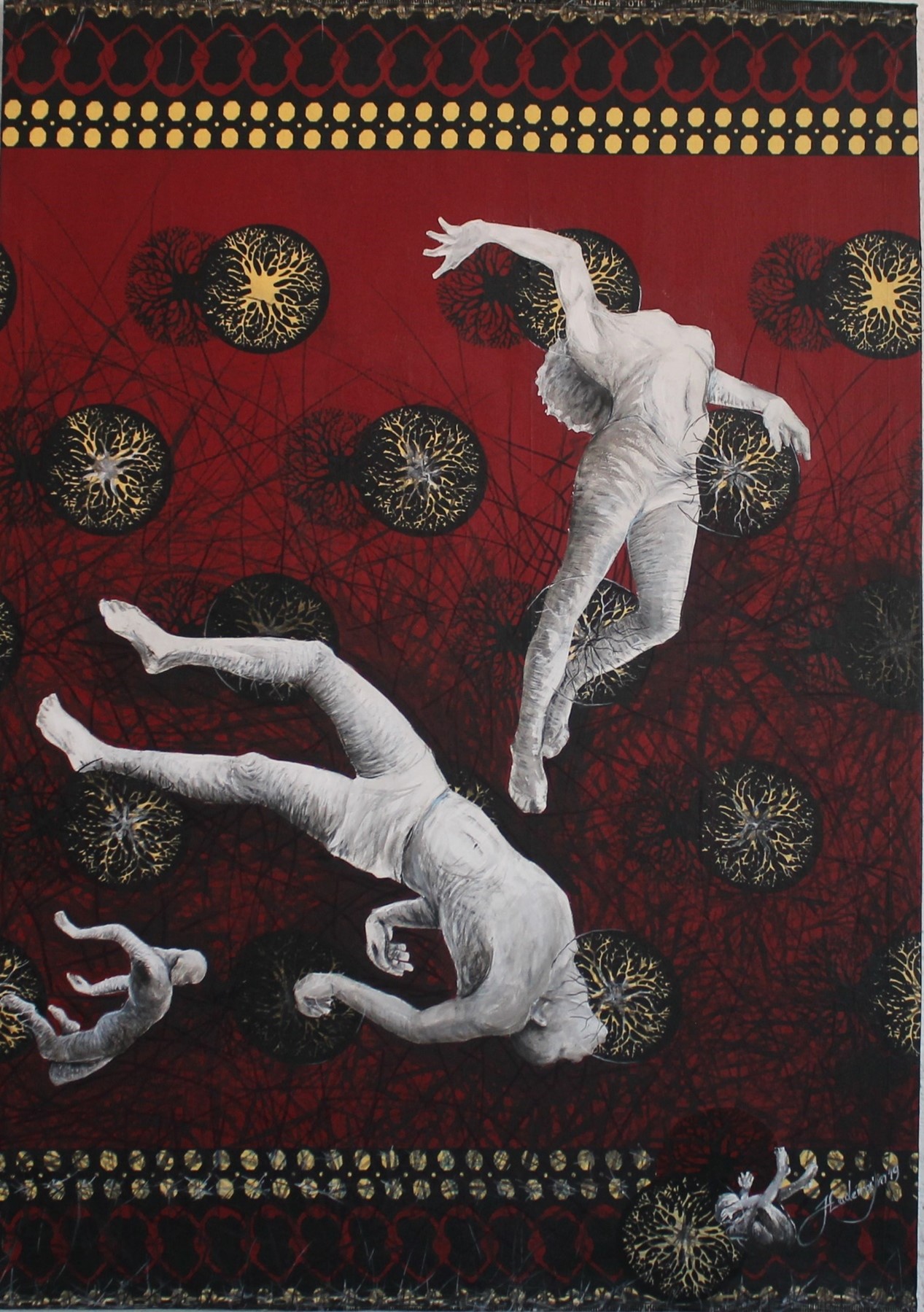
Joao Ladeira is a contemporary artist whose works comment on current affairs and particularly on issues affecting migration of people around world due to socio-political and economic instability, in particular in the African continent. Ladeira’s art exposes the human side of displaced people on the continent of Africa.
Ladeira is a graduate of the University of Johannesburg where he earned a Master’s Degree in Fine Art and Design and did his research on “New Materials and Designs in Sustainable Community Development Projects”. Ladeira has worked at the University of Johannesburg and the University of Pretoria. He also worked in community engagement programs around South Africa. Ladeira has traveled extensively throughout the continent of Africa, Europe and North America.
Ladeira is a recipient of: Charles Moody Research Fellowship, where he was a guest scholar at University of Michigan, School of Arts and Design (2004). South African Initiatives Office Research Fellowship, Centre for Afro and Afro-American Studies, University of Michigan, Ann Arbor, Michigan, USA, 2004. Scarce Skills Fellowship Award, National Research Foundation, Lynwood, South Africa, 2002. Prestigious and Equity Scholarship, National Research Foundation, Lynwood, South Africa, 2005.
Ladeira draws inspiration from works by contemporary artists such as the British/Nigerian artist Yinka Shonibare, Chinese artist Ai Weiwei, the South Korean artist Kim Sooja, Kara Walker, to name a few. His choice of multimedia works is deliberate to bring together different properties that are joined to create one body of work; to echo with the life of migrants within the context of globalization where people from different places, cultures and religion, come together.
In his recent works, Ladeira tries to capture some challenges that some migrants go through, as on his latest solo exhibition “Crossing Over”. Here Ladeira explores the spiritual meaning in the face of life and death. He tries to capture the transition (of the soul) from one location to another or the transition to the unknown as a social condition. The physical space is transformed to a spiritual realm dissociated from physical condition. A space that becomes like a stage, where the figures are stripped form all possessions leaving the subjects bare.
The use of African colourful fabrics as background plays a major role in his works. It introduces an element of cheeriness; a sheer celebration of colours and patterns of this vibrant continent. Although what is known today as African batiks, have their origin from Indonesia, Ladeira uses African batiks within the context of post-colonialism integration or representation. Globalization has brought a multiplicity of languages and cultures, so as an artist, Ladeira feels that creativity within the context of contemporary art, cannot exist without the element of openness to socio- political and cultural, as well as appropriation of history as a form of celebration, and enrichment of values.
In this post-colonial Africa, what was previously known as a product of colonialism and trade has become integral part of African fashion. Within this framework, African batik therefore, is used by the artist as a tool for African new identity and pride.
Ladeira uses different techniques in his canvas, such as drawings, painting and collage. The figures are made of drawings most of the time defaced, with directional lines that forms a unique texture.
The migrant’s body in this context can be seen as collateral damage. A playground for politicians
and unscrupulous opportunists who benefit from the migrant’s misery. Remittances is a Key player in this process. Migrants working overseas often send back money every year, to help their families at home. This process it benefits many African governments, for the money sent back to their expatriates from overseas in their billions goes a long way. On the other hand, equally, overseas countries benefit imposing charges on those billions sent to poor countries, at times in very high percentages.
Ladeira’s latest series of works are a comment on the migrant’s crisis at the Mediterranean Sea. Every year thousands of African migrants try to cross the sea to Europe and many perish in the Sea. Migrants who come mostly from Sudan, Somalia, Eritrea, the Gambia, Mali and Nigeria, are often smuggled on the flimsy boats that offers little security; if not at all, which often ends in a tragedy of shipwreck.
Ladeira creates these works as a tool for awareness of this often-forgotten tragedy. The works aims to give face to the faceless, voice to the voiceless, and name to the nameless. From the artist own words “it is a way to honour particularly those who die trying to cross the Sea”.
